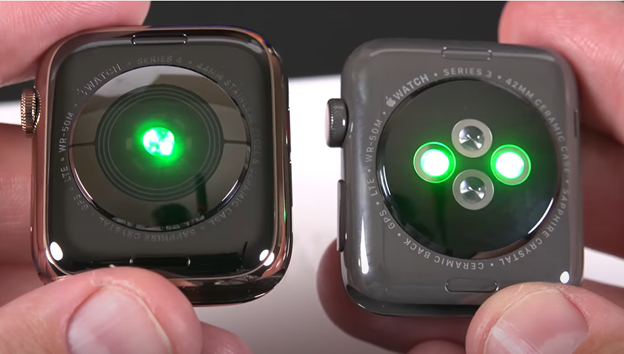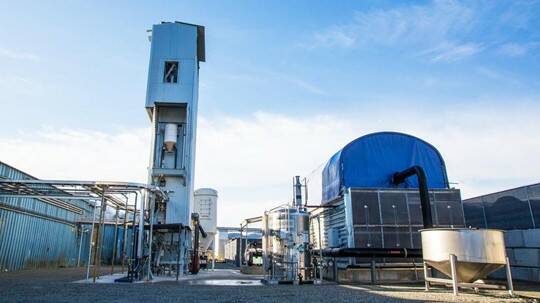Year-End Review: Technology Breakthroughs of 2021
2021 has been an unprecedented year in human history as the planet has grappled with both a pandemic and accelerating climate change. In many ways, it has also been an unprecedented year in science and technology. These areas have added some bright spots, including breakthroughs that hold promise for the future. As we look to a new year, we wanted to take a minute to wrap up some of 2021’s notable technology and engineering advancements:
Creating Unbreakable Display Screens
Almost everyone has experienced a cracked screen, whether from a dropped cell phone, mishandled laptop, or unfortunate tablet impact. This problem could be solved thanks to a breakthrough by researchers at the University of Queensland in Australia, announced in October.
Working with lead-halide perovskite nanocrystals, the team has developed a method to produce a new type of composite glass. It is not only unbreakable, but also provides crystal-clear quality to enhance LED lighting, smartphones, televisions, and computer screens. Learn more…

Could cracked screens become a thing of the past?
Making 30 VCSELs Emit as One
In November, we learned that researchers were able to create an array of 30 vertical cavity surface emitting lasers (VCSELs) that behave as a single coherent light source. VCSELs are the most common lasers in the world and are used routinely in applications ranging from portable phones and optical communications to instrumentation, manufacturing, 3D sensing, and facial recognition.
Applying topological photonics, the team of German and Israeli physicists created the array with all lasers emitting at the same frequency. This breakthrough paves the way for large-scale, high-power applications, and can in principle be scaled up to incorporate hundreds of individual lasers. Learn more…
Medical Monitoring on Your Wrist
Wearable gadgets and smartphone apps have been providing basic wellness monitoring by tracking metrics such as the wearer’s step count and pulse rate. But this information is primarily beneficial for basic fitness goals. Now wrist-worn devices and displays can provide real-time medical monitoring that can help save lives.
Some of these newer devices measure blood pressure and some can even take an ECG (electrocardiogram) scan of your heart in less than one minute. ECGs are an important diagnostic tool to detect anomalies in heart function that can be a precursor to strokes or heart attacks. Previously patients could only obtain an ECG in a doctor’s office.
A more complicated challenge has been to develop watches that can measure glucose levels to help the roughly 700 million1 patients with diabetes worldwide. Reportedly both Apple and Samsung are working on devices that could achieve this goal, and in November French biotech company PKvitality began a human clinical trial of what could be the first glucose monitoring smartwatch. Learn more…

The Apple Watch Series 4 was the first to incorporate both an optical heart rate sensor and built-in electrical leads to provide electrocardiogram monitoring capability. (Image source)
“Accelerating” Electric Vehicle Performance
Several factors have contributed to the generally slow adoption of electric vehicle (EV) models on the market, including high sticker prices, limited range on a single charge, and long recharging times. All these challenges are related to the lithium-ion batteries that power these automobiles.
Now a Silicon Valley startup called QuantumScape has developed a new component called a lithium-metal battery. Early test results indicate this battery could boost the range of an EV by 80% and can be rapidly recharged. Learn more…

Prototype lithium-metal battery. (Image source)
Sequestering CO2
With climate change already causing more—and more intense—storms, temperature extremes, polar ice melt, droughts, and floods, it’s becoming ever-more critical to limit the amount of carbon dioxide (CO2) in the atmosphere. Advances in air filtration technology now hold the promise of being able to remove CO2 from the air. Once removed, it can be used by a variety of industries or stored underground for later use.
A new approach called Direct Air Capture (DAC) is about to have its first large-scale trial in British Columbia where a new facility will remove 1 ton of CO2 from the air each year. Of course, it will take many more facilities like this to completely address the scope of climate change, but it is promising start. Learn more…

Pilot DAC plant in British Columbia. (Photo Credit: Carbon Engineering, source)
Artificial Intelligence Gets More Intelligent
While there isn’t a single breakthrough in Artificial Intelligence (AI) that rises above the rest, in 2021 the technology made big strides forward on multiple fronts. This year saw “powerful hints of the potential of large language models for the first time thanks to OpenAI’s GPT-3 [Generative Pre-trained Transformer 3], DeepMind used AI to solve one of the greatest open problems in molecular biology, and Boston Dynamics demonstrated their ability to blend AI and robotics in dramatic fashion.”2
AI-enabled robots from Boston Dynamics demonstrate their capabilities.
Exploring Our Galaxy
And finally, in the “mind-blowing” category is this 2021 breakthrough: humanity has touched the Sun (as if walking on Mars with the Perseverance rover wasn’t already enough for one year). A NASA probe launched in 2018, the Parker Solar Probe, was able to enter the sun’s atmosphere and “touch” the corona, gathering some solar dust in the process.
In Greek mythology, Icarus flew too close to the sun, melting the wax in his artificial wings and thus plummeting to his death. But the NASA probe fared a bit better—it actually survived the roughly 1 million °C temperature of the sun’s outer atmosphere, making three trips, the longest lasting for five hours, and emerged safely.3
Continuing Innovation in Metrology
Although there are no Radiant cameras in space (yet), Radiant had a few of our own breakthroughs in 2021 with the launch of our highest-resolution cameras ever: ProMetric® Imaging Photometers and Colorimeters with 61 MP scientific-grade sensors. We also pushed forward with the development of new products for release in 2022 that promise advanced capabilities for measurement of XR (AR/VR/MR) devices, surface and color inspection, and more.
Here’s to advancing science and technology even further in 2022!
CITATIONS
- Sawh, M., "Glucose monitoring wearables explained: The companies chasing the 'impossible' ", Wareable, November 2, 2021.
- Harris, J., “2021: A year in AI (so far).” Towards Data Science, July 21, 2021.
- “NASA Enters the Solar Atmosphere for the First Time, Bringing New Discoveries.” NASA, December 14, 2020
Join Mailing List
Stay up to date on our latest products, blog content, and events.
Join our Mailing List
